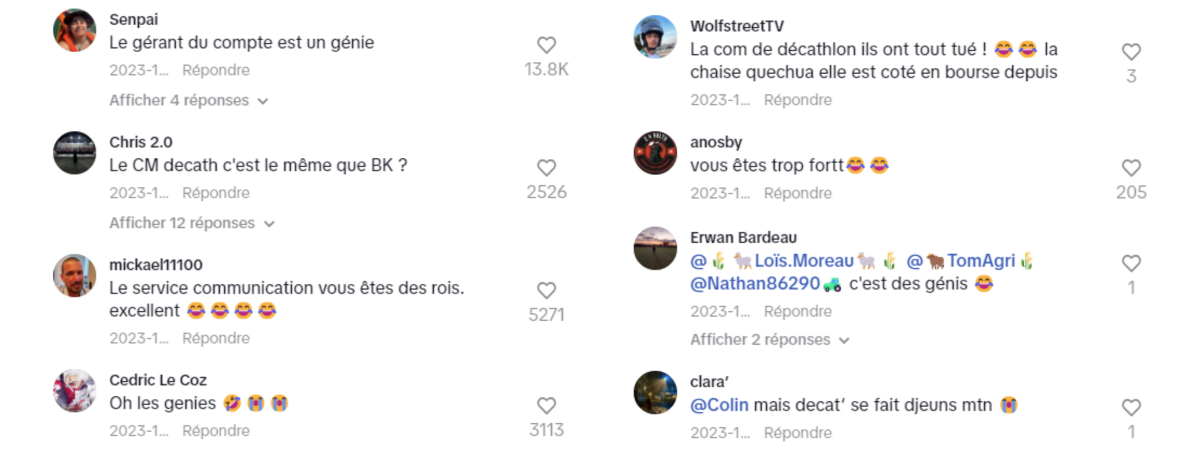In a saturated digital environment where every company is seeking to stand out from its competitors, brand positioning is becoming crucial to attracting attention and building loyalty among an increasingly sophisticated customer base. In this article, we take a look at the success story of Decathlon, a brand that has managed to consolidate its presence by adapting its strategy to the latest innovative trends and meeting the expectations of an increasingly demanding customer base.
Digital market context and the importance of the consumer
1.1. The rapidly changing digital landscape: from 2023 to 2024
In 2024, the digital marketing landscape will continue to evolve at breakneck speed, driven by technological innovations and changes in user behaviour.
Notable developments in 2023 include :
- 65% of web traffic came from mobile devices, compared with 33% from desktop computers and 2.16% from tablets – SimilarWeb.
- Video accounts for almost half of all Display traffic (46%) and is showing the strongest growth (+46%) – Blog du Modérateur.
- 77% of marketers have seen an increase in email engagement – Hubspot.
So it’s clear that digital trends and user preferences are constantly evolving, and that adapting to these changes is essential if you want to remain relevant in the minds of your target audience.
1.2. The consumer at the centre of strategic thinking
The first step in differentiating yourself is to gain a thorough understanding of your target audience and anticipate their expectations. This involves a number of imperatives:
- Developing marketing personas: It’s important to start by creating detailed marketing personas that comprehensively represent the different segments of your audience. These fictional profiles incorporate details such as preferences, motivations, challenges and buying behaviours, providing a fundamental basis for the development of your positioning strategy.
- Exploiting data: Using analysis tools such as Google Analytics 4 and creating customised reports are invaluable resources for understanding and anticipating your users’ expectations. By exploiting the data collected, you can understand user habits and preferences, identifying opportunities for improvement and differentiation.
- Collect feedback from your customers: Direct feedback from your customers (or not) remains a valuable source of information. Through surveys, encouraging comments on social networks and direct exchanges with customers, you gain an authentic insight into user expectations, enabling you to proactively adapt your positioning.
The Décathlon success story: Case study
Challenges encountered
The challenge for Décathlon, challenging its ability to evolve in a complex environment since its creation in 1976, was threefold: :
- Maintaining its dominant position in a saturated market: Faced with increasingly strong competition, Decathlon must constantly innovate and evolve to maintain its dominant position.
- Adapting to new digital trends: With the advent of digital technology, the brand must quickly adapt to new technological trends by developing a solid omnichannel presence.
- Responding to new demands for sustainability and social responsibility: To respond to the growing concerns of its target audience, Decathlon has undertaken a transformation by adopting an approach focused on sustainability and social responsibility to align itself with consumers’ current ethical and environmental values.
Responsible consumption at the heart of Belgium’s corporate project
Decathlon has anticipated the growing concerns of consumers by adopting an approach based on sustainability. Through initiatives such as responsible production and environmental awareness-raising, the brand has positioned itself as a player committed to preserving the environment.
Decathlon’s communications have also adapted to reflect these values. Take, for example, its successful communication campaign in Belgium! The sports retailer changed its name to “Nolhtaced” for a month, i.e. Decathlon spelt backwards. The aim of this project was to promote the launch of a new service in Belgium, based on “reverse shopping”. In this way, Decathlon is encouraging customers to consume differently, by putting recycling and the purchase of second-hand products at the centre of their concerns. For one month, consumers were able to sell all the sports equipment they no longer used. “Decathlon repairs them and then resells them as second-hand items under guarantee”, explains the Belgian subsidiary.
The good news? The operation is said to have collected 10,800 products in the space of just four weeks. The results encouraged the brand to continue this service, despite the return to the familiar brand name “Décathlon”, which was easier to pronounce.
Evolution of its global marketing strategy
1.1 A coherent, omnichannel action plan
Decathlon has seamlessly integrated its physical and online channels, creating a seamless omnichannel experience that caters for the varied buying preferences of its customers, aiming to make sport accessible to the general public. The physical shops and its entire online presence are therefore complementary, offering distinct advantages such as personalised advice in shop and the flexibility to order online at any time.
This strategy includes optimising the ‘Click and Collect’ service, enabling customers to order online and collect their products in-store, as well as flexible delivery options tailored to consumers’ changing needs, enhancing the convenience of the shopping experience.
1.2 Adapting to new trends: Focus on TikTok
Décathlon uses social networks strategically, creating synergies between its communication channels and reaching out to its different personas.
In 2023, it was the brand’s community management on TikTok that caught our attention. The brand has succeeded in raising its profile while capturing the attention of a younger, more dynamic audience, enabling it to stay in the race despite the saturated digital environment. The brand’s content mixes informational videos – such as tutorials – with a creative integration of the application’s latest ‘trends’ through clever storytelling. An approach that has been highly rewarded by the many comments received from users.

Conclusion: how does Décathlon stand out from its competitors?
In conclusion, Decathlon stands out as a leading example of successful brand positioning in a saturated digital environment. By adopting a responsible approach, adapting their image to current tastes and making innovative use of new communication channels, the brand has been able to meet the expectations of an increasingly demanding clientele. This case study offers valuable lessons and inspiring examples for all companies seeking to stand out in the ever-changing digital world.




